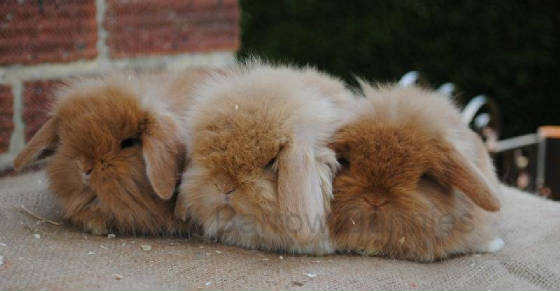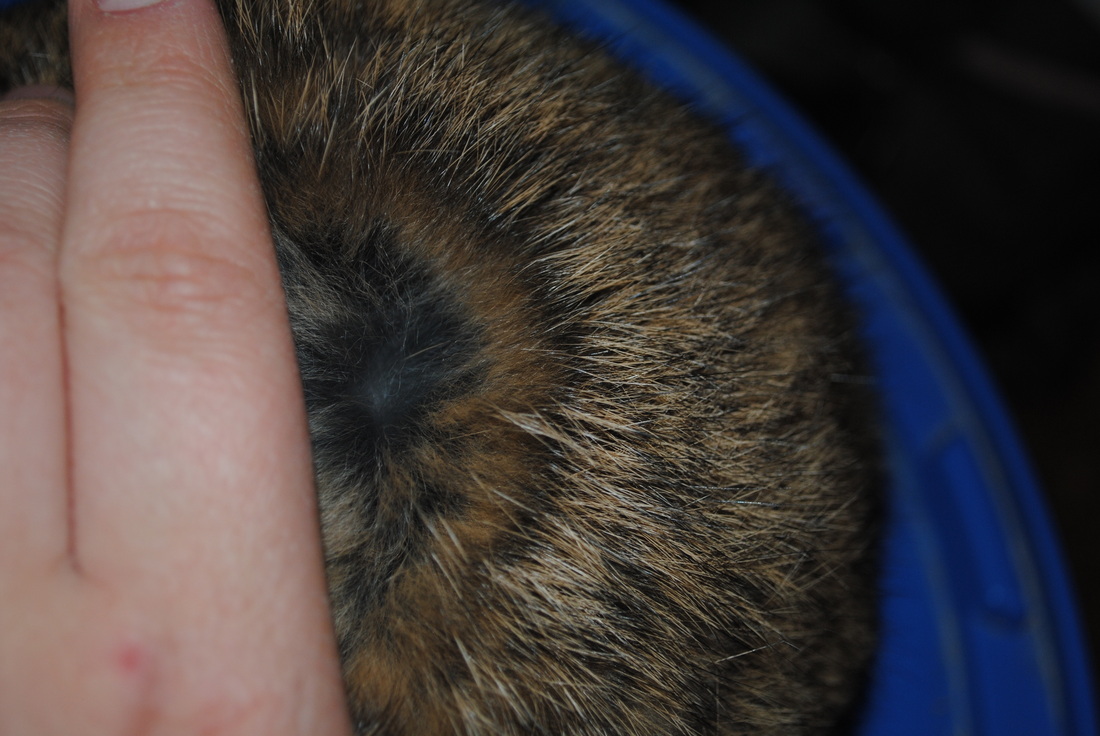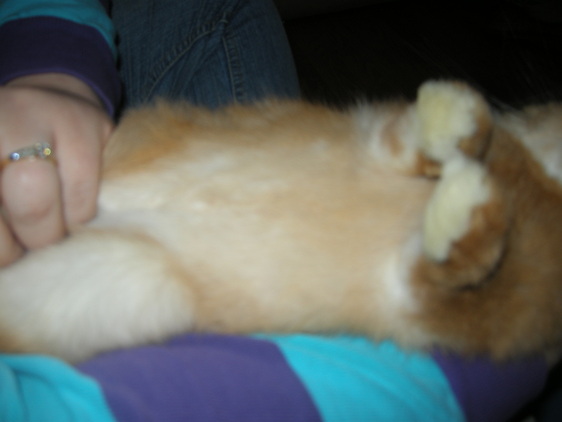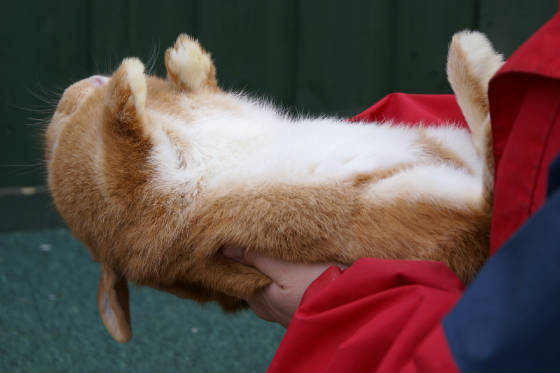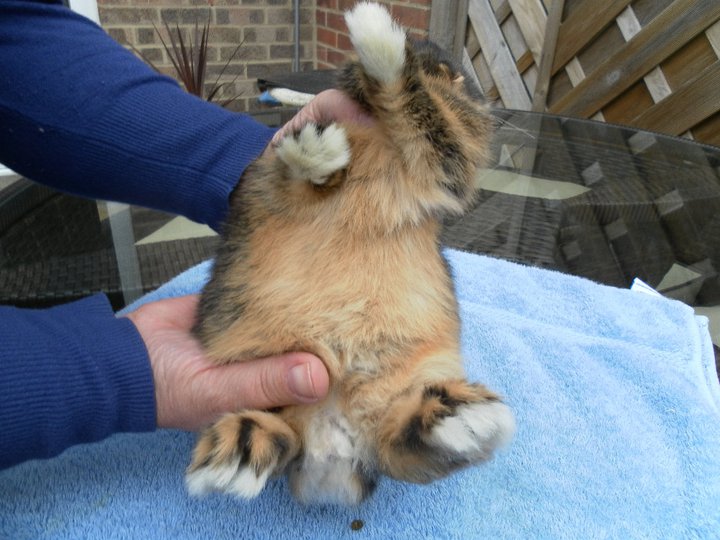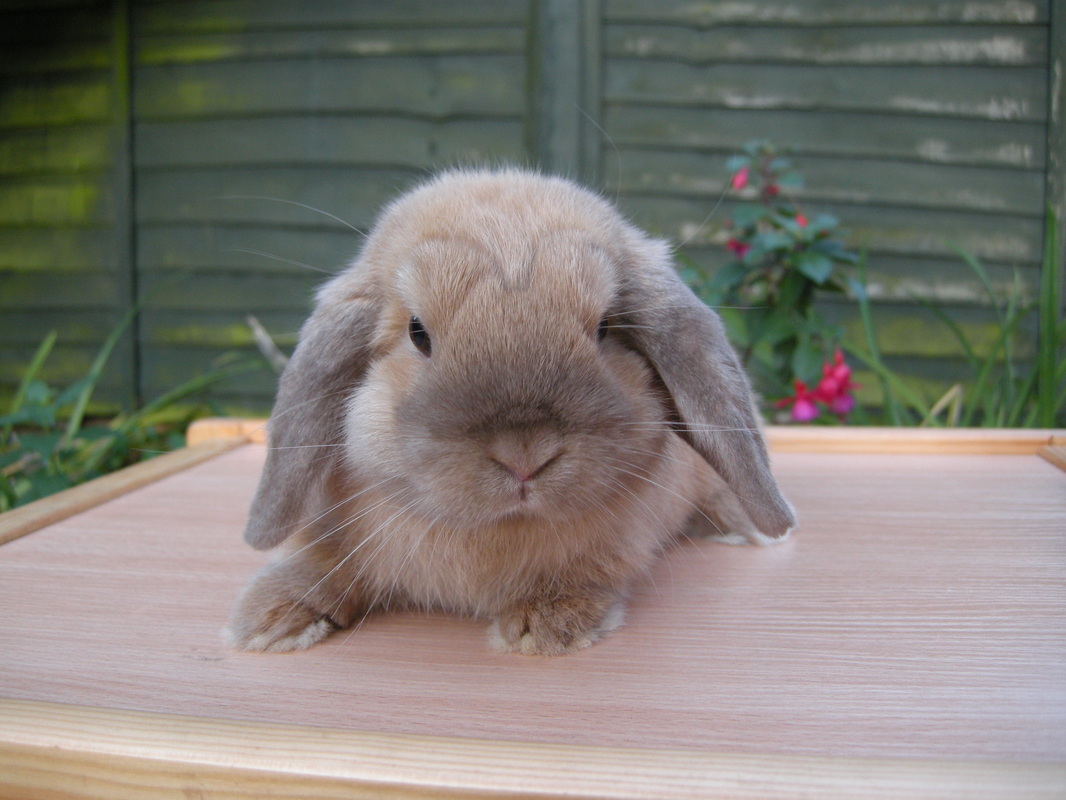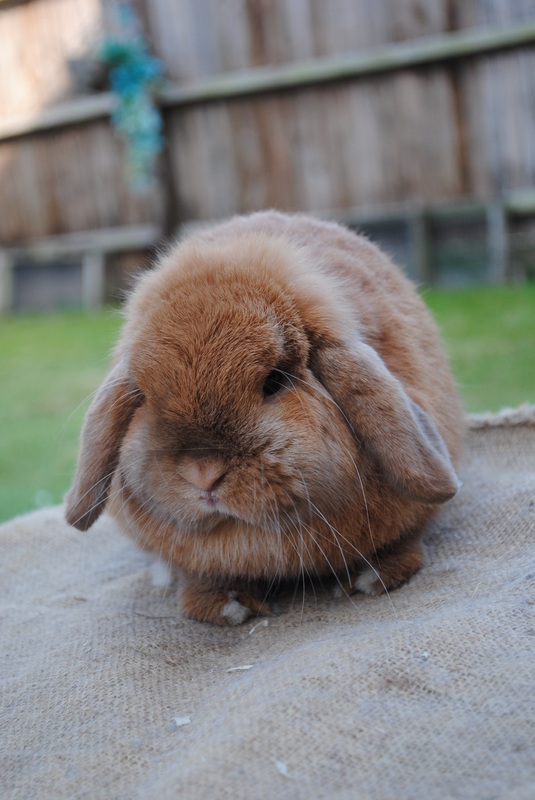THE RUFUS MODIFIER
Rufus classical Latin for red, does as you would expect and increases red pigmentation in the rabbits coat.
Here is an example of an orange that conforms well to standard (centre) flanked by two high rufus orange rabbits. As you can see the difference is quite dramatic.
Here is an example of an orange that conforms well to standard (centre) flanked by two high rufus orange rabbits. As you can see the difference is quite dramatic.
B.R.C. colour description:
Overall impression bright orange edged with white. Back: White undercolour, Orange top colour. Belly: White. Ears duller orange, but clear orange preferable. Underjaw, eye circles, inside of ears, under-tail white. Eyes brown. Nails light or dark horn.
Genotype A-B-C-D-ee
All are genetically orange: AABBCCDDee. The difference being that richer ones have inherited several rufus modifiers ( indicated by pluses) For example AABBCCDDee +++ would be very high rufus.
The rufus modifier (or polygene) is a stand alone gene if you like, not reliant on a particular allele, it merely influences a genotype. However it is speculated that rufus modifiers more commonly go hand in hand with chocolate/ brown.
The inheritance of rufus follows a normal continuous variation distribution pattern, meaning that if you mated two high rufus rabbits together there is no certainty that the resulting offspring would be high rufus, but the chances are obviously increased. In short a variation of shades would be expected, as seen in the photograph of litter above.
What is the difference between a high rufus orange and a red? A high rufus orange has a white belly and tail. A red has a red/ orange belly and tail (belly colour changed by the wide band gene).
The rufus modifier (or polygene) is a stand alone gene if you like, not reliant on a particular allele, it merely influences a genotype. However it is speculated that rufus modifiers more commonly go hand in hand with chocolate/ brown.
The inheritance of rufus follows a normal continuous variation distribution pattern, meaning that if you mated two high rufus rabbits together there is no certainty that the resulting offspring would be high rufus, but the chances are obviously increased. In short a variation of shades would be expected, as seen in the photograph of litter above.
What is the difference between a high rufus orange and a red? A high rufus orange has a white belly and tail. A red has a red/ orange belly and tail (belly colour changed by the wide band gene).
B.R.C. colour description of red:
Overall impression rich orange-red. Back: White undercolour, orange-red top colour. Belly: Orange. Underjaw, eye circles, inside of ears, under-tail creamy orange. Eyes brown. Nails light or dark horn.
Genotype A-B-C-D-ee +++rufus modifiers
Quite often high rufus rabbits will be used in agouti lines lacking orange banding or appearing too dark. This can also be desirable because wide band is often part and parcel in high rufus specimens, widening the depth of orange banding and the rufus intensifying.
B.R.C colour description of agouti:
Overall impression reddish sand colour edged with white. Back: Slate undercolour, thin orange/yellow band, black tips. Belly: Slate undercolour, white top colour, Ears laced black. Underjaw, eye circles, inside of ears, under-tail white. Nape of neck and groin streaks orange. Eyes brown. Nails dark horn or black.
Genotype A-B-C-D-E-
Below: Correct agouti, orange band is wide and vibrant, but not over powering.
High rufus rabbits are also sometimes used in otters lacking tanning. We have found them to be especially useful in blue otter breeding programmes.
The use of rufus and in turn wide band, if not understood or used correctly, can do more harm than good. These are apparent in show reports when judges use terms such as 'hot belly' or 'hot under', which means that the under of what should be a white bellied rabbit (agoutis, otters, oranges are classic examples), appears cream, peach, yellow or red. Below is an example of a high rufus orange with a 'hot belly' (incorrect).
The use of rufus and in turn wide band, if not understood or used correctly, can do more harm than good. These are apparent in show reports when judges use terms such as 'hot belly' or 'hot under', which means that the under of what should be a white bellied rabbit (agoutis, otters, oranges are classic examples), appears cream, peach, yellow or red. Below is an example of a high rufus orange with a 'hot belly' (incorrect).
Below is a photo of an orange with the correct white belly (if a little bright on top).
Here is an example of an otter with a hot belly, though rather extreme (incorrect), almost verging on tan! With thanks to Shanbrook Stud.
In self non extension rabbits, rufus is also commonly misused. Impacting negatively on shadings and points.
B.R.C. colour description of Chocolate Tortoiseshell:
Overall impression orange shading to dark chocolate 'points' and belly. Back: orange shading to chocolate tipped orange on the flanks, undercolour white. Belly: chocolate. Undercolour orange and white. Smut, ears, feet and tail also chocolate. Eyes brown. Nails light or dark horn.
Genotype aabbC-D-ee
Below is a super example of the shadings a chocolate tortoiseshell should possess.
Below is an example of how chocolate tortoishell shadings have been compromised by an excess of rufus modifiers.
High rufus rabbits can be very useful when used correctly, but unfortunately too many breeders seem to be perpetuating a fad and ruining what could otherwise be a beautiful well conforming rabbit. APPROACH WITH CAUTION!
